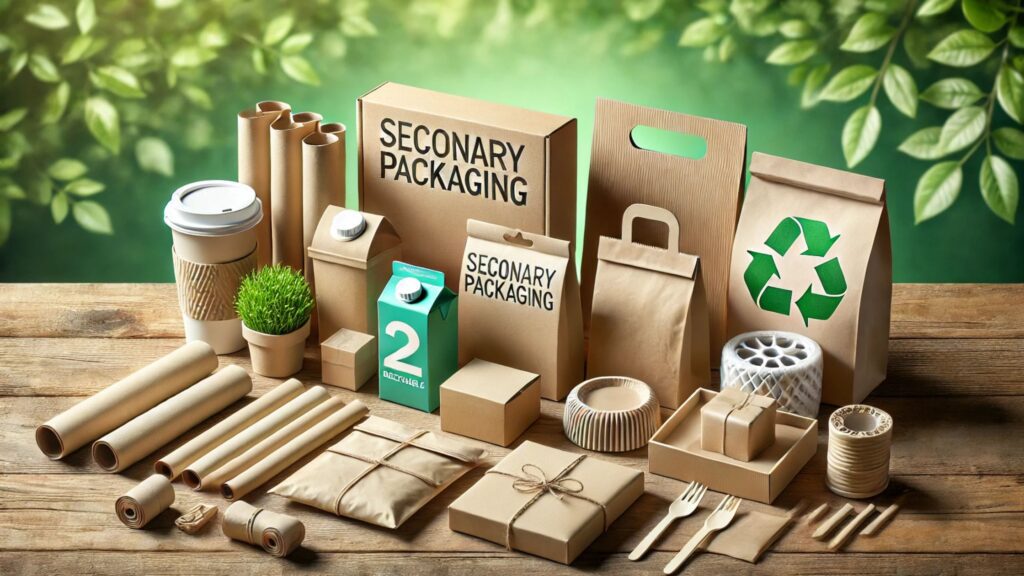The global push for sustainability has transformed industries, compelling businesses to rethink their packaging strategies. While primary packaging—the material that directly encases a product—receives significant attention, secondary packaging also plays a crucial role in environmental impact. Sustainable secondary packaging is an essential component of eco-friendly supply chains, offering businesses a way to reduce waste, lower carbon footprints, and enhance their brand image.
In this blog, we will explore what sustainable secondary packaging is, why it matters, the latest innovations in the industry, and how companies can adopt more environmentally friendly secondary packaging solutions.
Understanding Sustainable Secondary Packaging
Secondary packaging is the additional layer of packaging used to protect, store, and transport multiple units of a product. It includes materials such as cardboard boxes, cartons, wrapping films, and fillers that ensure safe delivery from manufacturers to retailers or customers.
Sustainable secondary packaging refers to the use of materials and designs that minimize environmental harm. This can involve:
-
Recyclable or biodegradable materials (e.g., corrugated cardboard, compostable films)
-
Minimalist design to reduce waste
-
Reusable packaging solutions
-
Energy-efficient production processes
-
Use of non-toxic and renewable resources
Unlike tertiary packaging, which is primarily for bulk transport (pallets, crates), secondary packaging is visible to customers, making it an important touchpoint for sustainable branding.
Why Sustainable Secondary Packaging Matters
1. Reducing Waste and Pollution
Traditional secondary packaging often includes excessive plastic and mixed-material packaging that is difficult to recycle. By switching to sustainable alternatives, companies can significantly cut down on landfill waste and ocean pollution.
2. Lowering Carbon Footprints
The production, transportation, and disposal of packaging materials contribute to carbon emissions. Sustainable secondary packaging, particularly when sourced from recycled materials or renewable resources, can lower a company’s overall carbon footprint.
3. Regulatory Compliance
Governments worldwide are implementing stricter regulations on packaging waste. The European Union’s Circular Economy Action Plan and the U.S. Sustainable Packaging Coalition set guidelines that encourage businesses to adopt sustainable practices.
4. Enhancing Brand Reputation
Sustainability is a major factor influencing consumer preferences. Studies show that customers are more likely to support brands that prioritize eco-friendly packaging. Businesses that invest in sustainable secondary packaging can improve their brand image and foster customer loyalty.
5. Cost Efficiency in the Long Run
Although the initial investment in sustainable materials may seem higher, businesses often save costs in waste management, regulatory fines, and raw materials in the long term. Lightweight and optimized secondary packaging can also reduce shipping costs.
Innovations in Sustainable Secondary Packaging
The packaging industry is evolving rapidly, with new technologies and materials emerging to meet sustainability goals. Some of the latest innovations include:
1. Recyclable and Biodegradable Packaging
-
Corrugated cardboard with water-based inks: Fully recyclable and compostable.
-
Molded pulp trays and inserts: Made from recycled paper, replacing Styrofoam.
-
Compostable films and wraps: Derived from plant-based materials like cornstarch.
2. Minimalist and Smart Design
-
Right-sizing technology: Uses AI to design packaging that fits products precisely, reducing material usage.
-
Eliminating unnecessary layers: Simplifying packaging structures to reduce waste.
3. Reusable and Returnable Packaging
-
Loop-based systems: Brands like Loop offer reusable secondary packaging that customers return after use.
-
Durable tote boxes: Some e-commerce brands use reusable shipping containers instead of disposable cardboard boxes.
4. Sustainable Adhesives and Printing
-
Soy-based inks and water-based adhesives: Reduce harmful chemicals in packaging production.
-
Laser engraving: An alternative to traditional printing that eliminates ink usage.
5. Biodegradable Fillers
-
Mushroom-based packaging: Grown from mycelium and acts as a sustainable alternative to foam fillers.
-
Paper-based void fillers: Replaces plastic bubble wrap.
How Companies Can Transition to Sustainable Secondary Packaging
If your business is looking to make the shift toward sustainable secondary packaging, here are some practical steps to follow:
1. Conduct a Packaging Audit
Analyze your current secondary packaging materials, supply chain efficiency, and waste levels. Identify areas where sustainable alternatives can be introduced.
2. Choose Eco-Friendly Materials
Opt for recyclable, biodegradable, or compostable materials. Partner with suppliers who provide certified sustainable packaging solutions.
3. Optimize Packaging Design
Reduce material usage by designing packaging that is lightweight and fits products snugly. Consider modular packaging that minimizes excess space.
4. Work with Sustainable Suppliers
Ensure your packaging suppliers follow environmentally responsible practices, such as using renewable energy and sustainable sourcing.
5. Educate Consumers
Encourage customers to recycle or reuse packaging by providing clear disposal instructions. Brands can also engage in sustainability campaigns to raise awareness.
6. Monitor and Improve
Regularly evaluate the effectiveness of your sustainable secondary packaging strategies. Collect feedback, track waste reduction, and adjust practices accordingly.
Conclusion
Sustainable secondary packaging is no longer an option—it’s a necessity for businesses looking to reduce their environmental impact and align with consumer demand for eco-conscious products. By embracing recyclable materials, innovative designs, and reusable solutions, companies can contribute to a greener future while improving cost efficiency and brand reputation.
The transition to sustainable secondary packaging may require initial investments, but the long-term benefits far outweigh the costs. As technology and consumer awareness continue to evolve, now is the perfect time for businesses to prioritize sustainability in their packaging strategies.
By making the switch, your company can be part of the solution to global waste challenges—one package at a time. 🌿♻️
Related Articles
- Kraft Paper Packaging: A Sustainable and Versatile Choice for Businesses
- The Future of Carton Packaging: Sustainability, Innovation, and Market Trends
- Polybag Packaging: Benefits, Uses, and Sustainability
- The Versatility and Importance of Plastic Wrap Packaging
- Shredded Paper for Packaging: A Sustainable and Cost-Effective Solution
- Bubble Packaging: The Ultimate Solution for Protection and Sustainability
- Sandwich Packaging: Ensuring Freshness, Sustainability, and Appeal
- Biodegradable Food Packaging: A Sustainable Solution for the Future
- Eco Friendly Food Packaging: A Sustainable Choice for the Future
- Tissue Paper Packaging: The Eco-Friendly & Elegant Solution

